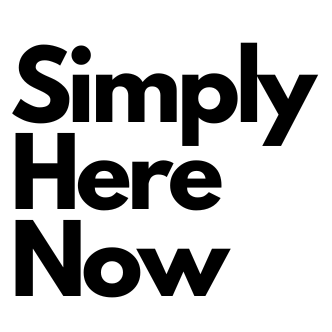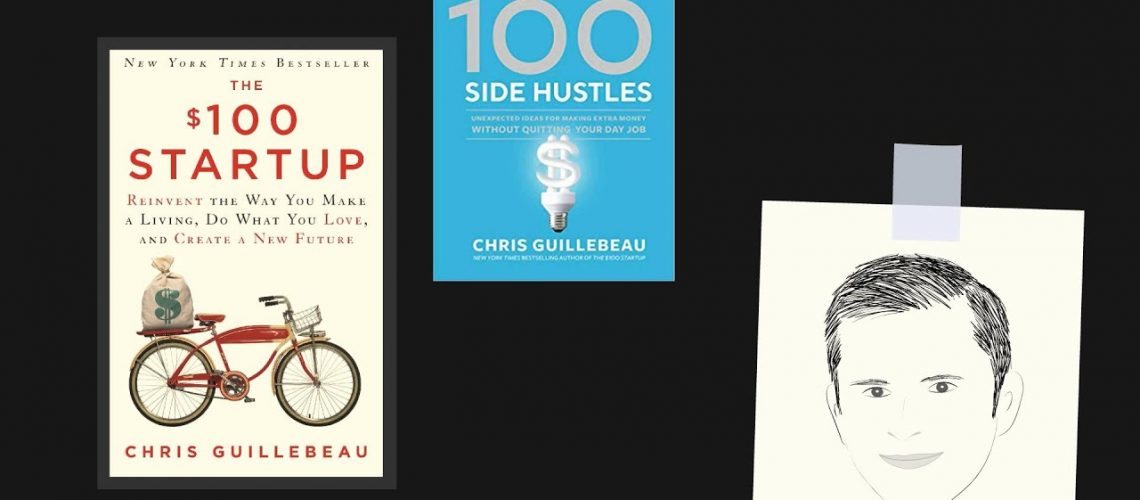Reinvent the Way You Make a Living, Do What You Love, and Create a New Future & Unexpected Ideas for Making Extra Money Without Quitting Your Day Job.
Animated Core Message by Productivity Game
Key Takeaways
Chris Guillebeau interviewed thousands of people who started a full-time business or a side business—also known as a side hustle—with less than a thousand dollars. Many spent less than a hundred and now generate more than $50,000 a year in profit.
These micro entrepreneurs didn’t have special skills or business degrees, they’re just normal people who wanted more freedom and flexibility in their lives so they tried selling a product they thought others would find useful and raced to make the first sale.
From there they learned what worked and what didn’t and before they knew it, they had a business that brought in enough money to cover their living expenses and give them the option to either quit their day job or keep their day job and have more opportunity to do what they wanted outside of work.
Low-cost business startups come in all shapes and sizes, but there are two primary idea pools that seemed to create the biggest upside with the least amount of initial investment.
Let’s explore these two potentially profitable idea pools to find a money-making project that you could start working on today and a year from now earn enough money to either quit your job or simply do more of what you love outside of work.
Two Primary Idea Pools
Profitable Idea Pool #1. Information Products
When Pat Flynn hosted the smart passive income podcast, he was laid off from his architecture position in 2008. He started studying for a green building architectural industry certification called LEED to increase his employment opportunities, but rather than just keeping notes in a notebook, Flynn created a website and posted what he learned online to help himself and others pass the exam.
In October of 2008 after getting some traffic to the website, Flynn offered a $19.95 short ebook study guide on the site with a simple PayPal button. Later that month Flynn was shocked to see that he’d made seven thousand and eight dollars in sales. A year later, Flynn was making more than $30,000 a month from that guide, a related audiobook, and a few practice exams.
Inspired by the success of greenexamacademy.com, he launched another website called food tracker.com, aimed at helping aspiring food truck owners make sense of the food truck industry, but Flynn didn’t own a food truck nor did he have experience in industry, so he interviewed successful food truck owners and curated their knowledge into an easy to navigate website.
Flynn wisely says you don’t actually have to be an expert, you just have to know more than the people who are looking for the information. But if you are an expert, especially in something niche and useful, you can turn that knowledge into a profitable micro business.
In 100 Side Hustles author Chris Gillebeau shares the story of Teresa Greenway, a lady who went from collecting food stamps, to collecting a hundred and seventy eight thousand dollars from her sourdough bread making online courses in just two years.
In the book, gillebeau says she had no professional camera or high quality editing software. In fact, she didn’t even have a real kitchen. She used a makeshift space in her garage with poor lighting and a cracked stained concrete floor that didn’t exactly spell professionalism. Teresa had always loved making sourdough bread with her daughter, but she never thought it would be a business opportunity.
The fact is there are lots of people online who want to understand a niche topic or a new industry—like the food truck—but don’t have the time to do the research or read entire books on the topic. They’d rather have a quick ebook guide or a convenient video course. This offers a great opportunity for an information product Micro business.
To help you start your own information product micro business, try either of these two paths:
Information Product Path #1:
Offer a quick guide.
- First make a list of 20 topics you either know a lot about or want to learn about that other people would find useful.
- Then use sites like buzzsumo and Google Trends to identify topics that are increasing in popularity; like food trucks and podcasting were a few years ago.
- Then select one topic and create a small three to five page PDF guide to help people answer one burning question related to the topic, like how to select the right podcasting equipment or how to market your food truck business.
- The goal of your guide should be to save people time, money and headache.
- Now create a single page website using a simple drag-and-drop website building service like Squarespace or Wix.
- On your one page site show your target customer that you understand their confusion and frustration then offer your short PDF guide as a way to relieve their pain.
- Install a PayPal button on the bottom of your page with a money-back guarantee and a testimonial that is a real person who has used your guide and has nice things to say about it.
- You can get a testimonial by giving your guide away for free to a few people and asking for feedback.
- Now spend $20 on a Facebook or Google ad to see if people want to click to your website and buy your product.
The goal is not to get rich off this guide, you probably won’t. The goal is to experience a few sales and build upon what’s working, then reach out to your customers to get feedback and learn what else you can help them with. From there you can make more guides, longer guides, that will accumulate to generate substantial profit.
Information Product Path #2:
Offer an online course.
- If you want to go straight to the online course route like Teresa, go to an online course website like Udemy or Skill Share, and browse subjects you know a thing or two about.
- Focus on niche topics like sourdough bread making, then look at the existing courses and ask yourself could I make a better course, that is could I do a better job simplifying the subject?
- Once you find a course subject, make a short but useful entry-level course to gauge the interest.
- Then once you have a few people take the course ask them what more they like to learn.
- Only invest more time in building your next course if you proven there’s a demand.
Profitable Idea Pool #2. Private Label Products
When most people think about selling a physical product, they think they need to be a skilled inventor and require a half a million dollars to manufacture and warehouse their physical product, but thanks to Alibaba, crowdfunding, and fulfillment by Amazon, you don’t need special skills and you don’t need more than a thousand dollars to get started.
Example:
Raj Jonah, a petroleum engineer from Houston, manufactured a private-label product and escaped the nine to five corporate rat race to work for himself. Raj loved specialty coffee and wondered if he could make a product to capitalize on the growing specialty coffee trend.
After researching popular coffee accessories on Amazon and Kickstarter, Raj found a product he wanted to sell. A manual, lightweight $20-$30 coffee grinder. Raj went to Alibaba.com and searched for a manufacturer who specialized in coffee grinders.
After some searching, he found the same manufacturer of a generic coffee grinder he saw on Amazon who was willing to let Raj custom brand the coffee grinder and legally sell on his own Amazon store. Raj came up with the brand name JavaPresse, drew up a simple logo design, and placed $1,000 order for 200 coffee grinders with his JavaPresse label.
Weeks later the manufacturer he found on Alibaba shipped the coffee grinders to Amazon and through the fulfillment by Amazon program, Amazon stored Rogers product, accepted orders and delivered the product to customers. All Raj had to do was create an Amazon sales page and Amazon would take care of the rest.
Lucky for Raj it worked. He’s sold over 200,000 java pressed coffee grinders and has over 5,000 five-star reviews on Amazon.
If you want to get started creating your own private label product and launch your own private label micro business, simply go to Alibaba.com, and browse the list of products filtering for products that:
1. Products You Can Use You use and can therefore easily sell because you understand the desire and pain points of the target customer. Raj could write a compelling Amazon sales page because he loved using a manual coffee grinder every morning.
2. Product in Demand Next filter for product that’s in demand look for trendy areas like specialty coffee or a phone case for the latest iPhone.
3. Products People Will Share Look for products people are likely to share with their friends on social media. You want your product sales to increase by word-of-mouth.
- As you browse Alibaba, write down the items that fit these three criteria.
- Then go to Amazon and see if you can find similar items that are for sale.
- Once you find a similar item ask yourself: can I make a brand and sales page that’s more appealing to the target customer?
- If there isn’t much competition or the competition is doing a poor job of marketing and branding their product, you might just have a profitable private label product idea.
- If so, reach out to the manufacturer in Alibaba and see what modifications you can make to the product and where you can put your label.
- Then hire a designer on fiverr.com or freelancer.com and get a good logo design for less than $100 you can send and manufacture.
- Now place your minimum order.
- If the minimum order is too much, you might want to try using a crowdfunding service like IndieGoGo or Kickstarter to market your idea before you manufacture it.
- Simply make your crowdfunding page like you to make your Amazon sales page and share it with friends or by facebook ads that link to your crowdfunding page and don’t go ahead with manufacturing your product until you’ve crowdfunded enough money to place your minimum order and manufacture your product.
In the end, explore the two profitable idea pools—information products and private label products—for potential products that you’d be excited to sell and that would be useful to others.
Be different and better than the competition, but understanding your customer better. Then race to get your first sale. Don’t build out a whole website, just get one landing page up and running. The faster you try to make a sale, the quicker you’ll learn and improve on your idea and make it more profitable.
The key is to not think of launching a big business or feel pressure to make any one product idea work. The key is to think of it as conducting micro business experiments. Eventually you’ll find one that works and you’ll find the freedom and flexibility you desire, but remember freedom and flexibility only come by providing value to others.

